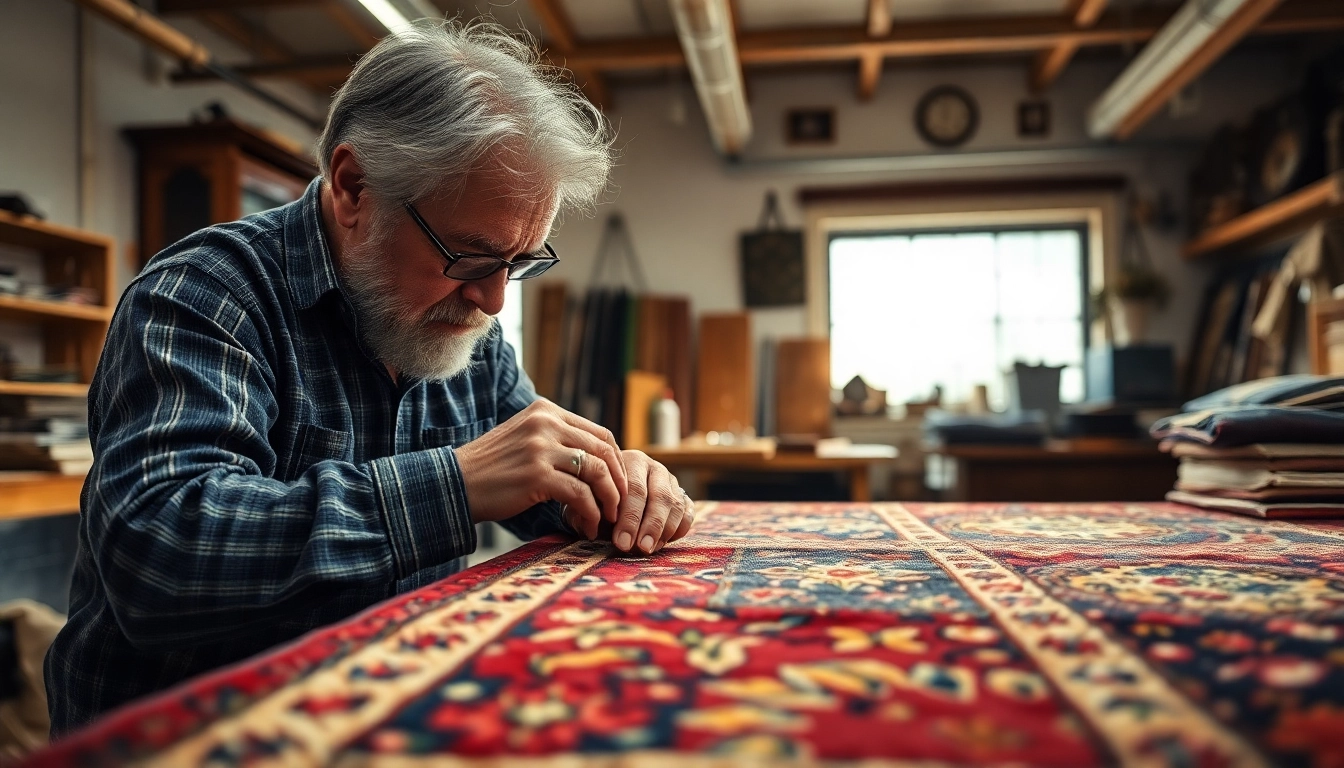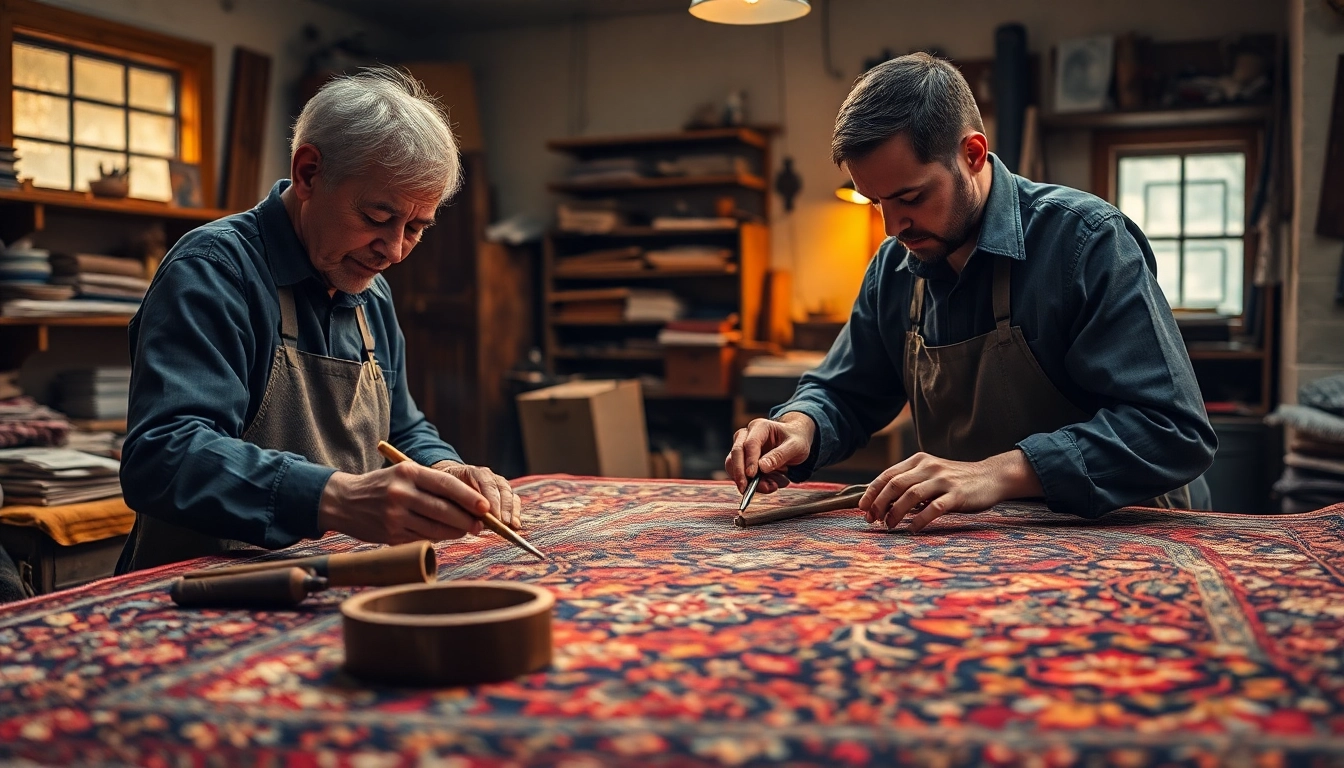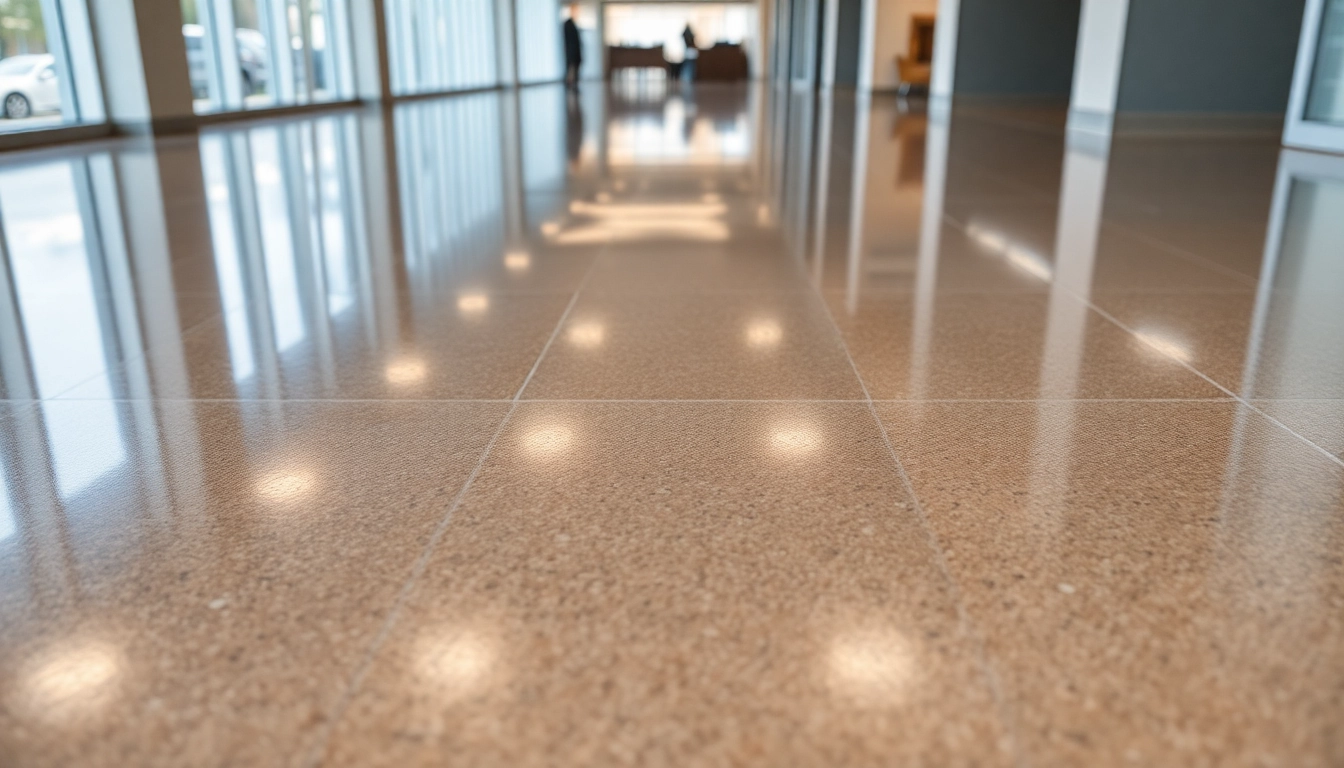Understanding Restauro Tappeti Milano: Techniques and Benefits
Restoration of carpets, especially in a refined city like Milan, is a meticulous art that preserves both the aesthetic and historical integrity of each piece. Whether you own an antique Persian rug or a contemporary artful creation, engaging in Restauro Tappeti milano ensures longevity and sustained beauty. Professional restoration services are not merely about cleaning; they involve complex techniques tailored to the rug’s materials, age, and condition. In this section, we will explore the various methods employed by experts in Milan to restore rugs and why opting for professional techniques is essential for ensuring preservation and enhancing value.
Common restoration methods used for oriental and modern rugs
The restoration process for oriental and modern rugs varies significantly based on their composition, age, and the extent of damage. Highly specialized techniques include:
- Hand Repair and Reweaving: Great for damaged areas with holes or frayed edges, artisans use fine threads that match the original rug’s weave to reweave missing sections, maintaining authenticity.
- Color Restoration: If colors have faded or bled, experts may employ dyeing techniques, often using natural dyes or colorfast synthetic dyes, to restore vibrancy without compromising the rug’s integrity.
- Surface Cleaning and Decontamination: Utilizing delicate, pH-balanced detergents and gentle brushing, the cleaning process removes dust, dirt, and pollutants accumulated over decades, preventing further deterioration.
- Structural Reinforcement: Applying backing materials or adhesives to weak areas enhances durability, which is especially vital for antique pieces that have become fragile over time.
The importance of professional restoration for preserving value
Professional restoration is crucial because it preserves the rugs’ cultural and monetary value. Unlike DIY cleaning or repairs, professionals in Milan employ advanced techniques informed by heritage conservation standards. This meticulous approach ensures that the repairs do not distort the original craftsmanship and that the integrity of the rug remains intact. Proper restoration can prevent further deterioration, safeguard the rug’s historical significance, and even increase its market value. For collectors or owners of antique pieces, entrusting their rugs to certified experts guarantees a preservation process that respects both the artistic and material authenticity.
How restoration can extend the lifespan of your carpets
Every rug, whether antique or modern, faces challenges from environmental factors, wear and tear, and accidental damages. Professional restoration extends a rug’s lifespan by addressing these issues early and thoroughly. For example:
- Removing ingrained dirt halts fiber degradation caused by pollutants.
- Reinforcing weak areas prevents tears and fraying from worsening.
- Restoring colors prevents fading, maintaining visual appeal.
In essence, expert restoration is a long-term investment, ensuring that a precious piece of art remains vibrant and structurally sound for generations.
Steps to Professional Restauro Tappeti Milano
Initial assessment and damage evaluation
The restoration process begins with a comprehensive assessment by specialists. They analyze the rug’s material composition—whether wool, silk, or synthetic fibers—and evaluate the extent of damage, such as tears, stains, color fading, or structural instability. This diagnostic phase includes lighting inspections, microscopic analysis, and sometimes, non-invasive imaging techniques like infrared or UV scans to detect underlying issues unseen to the naked eye.
Selection of techniques suited to the rug’s material and age
Based on the initial evaluation, artisans choose the most appropriate procedures. For example, a vintage Persian rug might require delicate hand-washing in natural dyes, while a modern synthetic rug might need chemical cleaning combined with structural reinforcement. Tailoring methods to the rug’s unique characteristics ensures optimal results without compromising its authenticity or value.
Final cleaning, repair, and preservation procedures
Post assessment, a step-by-step restoration plan is executed. Cleaning is performed with eco-friendly, pH-controlled solutions to preserve fibers. Repairs involve precise reweaving or patching using age-matched materials. Protective treatments, such as anti-moth solutions and UV inhibitors, are applied to safeguard the restored rug from future damage. The final phase includes appropriate storage or framing, especially for invaluable or delicate rugs, to maintain their condition for the long term.
Choosing the Right Restauro Tappeti Milano Service
Factors to consider: experience, specialization, certifications
Selecting a trustworthy restoration service requires careful evaluation. Opt for providers with extensive experience in handling both antique and modern rugs. Look for certifications from heritage conservation institutions or specialized training in textile restoration. A proven track record, evident through a portfolio of completed projects, indicates competence and reliability. In Milan, renowned centers such as Persia&Tappeti or Babaei Carpets showcase expertise in authentic restoration techniques.
Requesting quotes and understanding cost ranges
Restoration costs vary based on the size, complexity, and type of damage. Typical prices range from €50 for minor repairs to over €1,000 for extensive restorations of high-value antique rugs. Always request detailed quotes, preferably with a written assessment, to understand what the process entails and avoid hidden charges. Most reputable services provide transparent pricing, considering factors like labor intensity, material costs, and specialist expertise.
How to verify quality through portfolio and customer reviews
Review previous work through portfolios, photographs, or testimonials. Customer reviews on independent platforms often highlight professionalism, attention to detail, and satisfaction levels. Approach providers that openly share case studies or before-and-after images, providing confidence in their craftsmanship. Visiting the workshop physically, if possible, can further assure you of their facilities and workers’ expertise.
Cost and Value of Restauro Tappeti Milano
Average pricing and factors influencing costs
As noted, restoration costs fluctuate based on rug complexity and damage. Factors influencing those costs include:
- Size and intricacy of the pattern
- Type and age of materials used
- Extent of structural or color damage
- Urgency of the repair
For example, restoring a small modern rug might cost less than an antique, heavily damaged Persian masterpiece, which demands specialized techniques and extensive labor.
Assessing the investment: preserving or increasing your rug’s value
High-quality restoration not only preserves but can enhance rug value, especially if the piece is of historical importance. Properly restored rugs with documented provenance often fetch higher prices at auctions or sales. Additionally, a well-maintained rug retains its appearance long-term, making it a valuable asset or heirloom. Investing in professional restoration thus becomes an asset, combining aesthetic appeal with financial worth.
Possible insurance coverage and maintenance tips after restoration
Many insurance policies cover high-value rugs against damage or loss, especially if appraised before and after restoration. Post-restoration, routine care—such as gentle vacuuming, avoiding direct sunlight, and periodic professional check-ups—helps maintain the restored condition. Regular cleaning and prompt repairs for minor damages prevent costly future restorations, ensuring the rug’s continued beauty and stability.
Maintaining the Integrity of Your Restored Tappeti
Best practices for daily care and cleaning
To preserve the work of professionals, adopt gentle daily maintenance routines. Use a soft-bristled vacuum cleaner without a beater bar, and always vacuum in the direction of the pile. Avoid excessive moisture and harsh chemicals that can compromise fibers and dyes. Implementing these simple practices maintains surface cleanliness and prevents dirt accumulation, which can degrade fibers over time.
Long-term preservation tips from restoration experts
Experts recommend controlling environmental conditions—keeping humidity levels between 40-60% and temperature stable—to prevent fiber deterioration and mold growth. Use padded underlays to reduce wear and prevent stretching or sagging. When displaying or storing rugs, avoid exposure to direct sunlight and pollutants. Consider periodic professional evaluations to identify early signs of deterioration, enabling timely intervention.
When to schedule routine check-ups and touch-ups
Regular inspections—at least biannually—are crucial, especially for high-value or antique pieces. Immediate attention to small issues like fraying, spots, or color fading can prevent more extensive damage. Professional touch-ups can reestablish the rug’s appearance and prolong its lifespan, ensuring that your investment remains pristine for decades.




